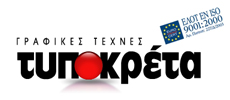Prefectures of Crete
Chania Prefecture
Municipality of ChaniaMunicipality of ApokoronasMunicipality of PlataniasMunicipality of KissamosMunicipality of Kandanos - SelinosMunicipality of GavdosMunicipality of Sfakia
Rethymnon Prefecture
Municipality of RethymnonMunicipality of MylopotamosMunicipality of AmariMunicipality of Agios VasiliosMunicipality of Anogia
Heraklion Prefecture
Municipality of HeraklionMunicipality of MaleviziMunicipality of Archanon - AsterousionMunicipality of FestosMunicipality of GortynaMunicipality of ChersonissosMunicipality of Minoa PediadosMunicipality of Viannos
Lassithi Prefecture
Municipality of MirampeloMunicipality of SitiaMunicipality of IerapetraMunicipality of Oropedio
Gournia
Gournia is a small Minoan settlement in east Crete, 19 km southwest of Agios Nikolaos. It was completely excavated by H.A. Boyd Hawes between 1901 and 1904. The low hill on which it stood controlled the roads from Central to east Crete and it was also close to the narrowest part of the island. It could therefore control the northern harbours and was also in easy contact with the African coast to the south. The first structures were built at the end of the 3rd millennium BC. That is the date of the ossuaries found to the north of the settlement and of a few traces of houses. The settlement was built in about 1600 BC and destroyed in 1450 BC. Some later remains show that parts of it were inhabited after this period.
The settlement was built on the north side, unfortified, and laid out in a series of streets paved with large pebbles which separated the seven building blocks. The buildings had a complete drainage system, had one or two floors with small rooms, stone thresholds and wooden doors. The roofs were flat. The excavation brought to light numerous finds, chiefly pottery and bronze tools, potter’s wheels and a bronze workshop, showing that it was an industrial centre.
The palace which was the seat of the local governor and equipped with magazines, stood on top of the hill north of a large central rectangular court, thought to have been a public place for crowded gatherings and sports. A small stepped structure in the form of an L may have been a Theatral Area. Behind the sacrificial platform a stone with hollows was found, recalling the Media kernos. The palace façade had the usual recesses and projections. Southwest of it is a row of Magazines, over which was a Banquet Hall. A small room northeast of the Men’s Quarters may have been a bath. The central Hall has columns and communicates with the women’s Quarters on the east. There was a small shrine north of the palace. It was a rectangular room 3 x 4 in with a bench on the north side on which cult objects were placed. In it were found clay figurines representing the epiphany of the goddess who appeared in the shape of a bird, bases of vases with relief snakes, and small horns of consecration.



 ENGLISH
ENGLISH







